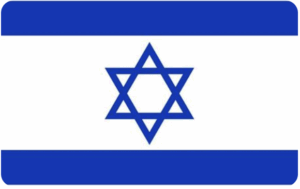Andrew L. Urban
You are watching a large TV screen, split in two.
 Screen A: Australian Jews gathered peacefully across the country on Sunday (Oct 12, 2025) to celebrate their first rays of light in two dark years, just hours ahead of the release of hostages captured by Hamas in October 2023. There were prayers, candlelight, a minute of silence, songs, speeches by community leaders and video addresses by state and federal MPs.
Screen A: Australian Jews gathered peacefully across the country on Sunday (Oct 12, 2025) to celebrate their first rays of light in two dark years, just hours ahead of the release of hostages captured by Hamas in October 2023. There were prayers, candlelight, a minute of silence, songs, speeches by community leaders and video addresses by state and federal MPs.
 Screen B: Their dignified conduct in large gatherings in both Sydney and Melbourne was in stark contrast to the behaviour of pro-Palestinian activists in those same cities where violent rants, vilification and anti-Semitic chants were the order of the day.
Screen B: Their dignified conduct in large gatherings in both Sydney and Melbourne was in stark contrast to the behaviour of pro-Palestinian activists in those same cities where violent rants, vilification and anti-Semitic chants were the order of the day.
These are just two, if symbolic, examples of the differences between Jews and their historical self-declared enemies, the Palestinians.* Symbolic because throughout their history, driven by a love of life, Jews have survived and prospered in the face of hatred, oppression and slaughter.
By contrast, driven by love of death, Palestinians have been historical losers, their leaders making all the wrong decisions, often damned by evil deeds like intifada.
Israel pulled out of Gaza almost 20 years ago, handing the Palestinians the key and the power. It was effectively creating an unofficial two state solution. In the first and only elections held, Hamas was elected, giving radical Islam a stronghold on the border of its great ideological enemy. Ever since, Gaza was showered annually with billions in foreign aid – intended to support welfare and health benefits. It was misspent on the Hamas war machine, including hundreds of kilometres of tunnels below ground to offer shelter and storage for defence and offence. The residents of Gaza got the crumbs from this table.
Meanwhile, Israel made its hospitals available to sick Palestinians.
The Jewish people have endured a long history of persecution, displacement, and murder, surviving numerous significant events over millennia.
- Egyptian Enslavement and Exodus (circa 13th–12th century BCE) : According to biblical tradition, Jews were enslaved in Egypt for centuries before Moses led their liberation, as described in the Book of Exodus. This foundational event shaped Jewish identity and faith.
- Assyrian Conquest and Exile (722 BCE) : The Assyrian Empire conquered the northern Kingdom of Israel, dispersing the Ten Tribes. Many were assimilated or lost, but Jewish identity persisted through the surviving southern Kingdom of Judah.
- Babylonian Exile (586 BCE) : The Babylonian Empire, under Nebuchadnezzar II, destroyed the First Temple in Jerusalem and exiled much of Judah’s population to Babylon. The Jews maintained their religious and cultural identity, eventually returning to rebuild under Persian rule (circa 538 BCE).
- Greek Persecution and Maccabean Revolt (167–160 BCE) : Under Hellenistic Seleucid rule, Antiochus IV banned Jewish practices, sparking the Maccabean Revolt. The successful rebellion led to the rededication of the Second Temple, celebrated as Hanukkah.
- Roman Destruction and Diaspora (70 CE) : The Romans destroyed the Second Temple after a Jewish revolt, leading to widespread dispersion (Diaspora). Jews established communities across the Mediterranean, maintaining their traditions despite loss of a homeland.
- Expulsions and Persecutions in Medieval Europe (Middle Ages, 5th–15th centuries) : – Expulsions : Jews were expelled from England (1290), France (1306, 1394), Spain (1492), and Portugal (1497), often facing forced conversions or massacres. – Crusades (1096–1291) : Crusaders massacred Jewish communities in Europe and the Holy Land.- Black Death Persecutions (1348–1351) : Jews were scapegoated for the plague, leading to pogroms across Europe.
- Inquisition and Forced Conversions (15th–18th centuries) : The Spanish and Portuguese Inquisitions targeted Jews (and conversos) suspected of secretly practicing Judaism, resulting in executions, torture, and further expulsions.
- Pogroms in Eastern Europe (19th–20th centuries) : Jews in the Russian Empire and Eastern Europe faced violent pogroms, particularly in the 1880s and early 1900s, prompting mass emigration to the Americas and elsewhere.
- The Holocaust (1933–1945) : The Nazi regime systematically murdered six million Jews (one-third of the global Jewish population) during World War II. Despite genocide, forced labour, and ghettos, survivors rebuilt communities worldwide.
- Soviet Persecution (20th century) : Under Soviet rule, Jews faced religious suppression, antisemitic campaigns (e.g., the Doctors’ Plot, 1952–1953), and restrictions on emigration. Many resisted through underground religious and Zionist movements.
- Modern Antisemitism and Conflicts (20th–21st centuries) : – Post-Holocaust Antisemitism : Jews continued to face discrimination and violence globally, including in the Middle East and Europe.- Israeli-Arab Conflicts : After the establishment of Israel in 1948, Jews faced wars and terrorism intended to make Israel extinct, yet maintained a sovereign state.- Recent Attacks : rising antisemitic incidents globally highlight ongoing challenges. Like Hamas …
Screen A: Throughout these events, Jews survived through cultural preservation, religious commitment, and adaptation. They maintained their identity via texts (e.g., Torah, Talmud), communal structures, and traditions, often rebuilding after devastation.
Screen B: the extreme Islamism of the pro Palestinian demonstrations shows how they feed on hatred and death.
*News reports often refer to ‘pro-Palestinian supporters’ or ‘pro-Palestinian protesters’ when that often is essentally ‘Hamas supporters’. I discuss how the two mesh in what to make of Gazans
